What I liked
What I didn't like
|

Quick Plot
Develop your zoo and rise up to become the #1 zoo in the world!!!Mechanics
Match 3: This game uses your generic swap-style match 3. But one really nice feature is that they allow diagonal swaps. (Thank you, Reflexive). Your goal is to swap 2 pieces on the square grid and make straight matched strings of 3 in a row or more. The biggest match you can make is 9 pieces - and you'll actually earn a trophy for accomplishing this in the game. Each match you make earns you resources. A level ends once you've- collected all of the required resources, and
- directed animals along a path to an exit square, and/or
- moved some pieces all the way to the bottom of the puzzle border.

The zoo development interface. Clicking the big PLAY arrow starts the next match 3 level.
Zoo-building: After a level, if you have enough resources, you can build or upgrade buildings and exhibits in your zoo. The zoo-building feature serves the following 4 purposes:
- it can be fun to look at, and it's somewhat educational (learn scientific animal names),
- it allows you to be creative with your own personal zoo design,
- buildings give you upgrades and bonuses for the match 3 levels, and
- adding animals to your zoo is what takes you up the ranks to become the #1 zoo in the world.
- better versions of a resource (Example: Each materials match will bring you 9 materials instead of 3.)
- tools (Example: If you click the monkey tool, it will randomly rearrange pieces on the board.)
- 3-in-a-row bonuses (Example: If you get 3 research matches in a row, a number of locks will break.)
- special effect pieces (Example: If you move the water piece, the bottom two rows of the board are cleared. The water piece appears randomly once you've purchased a hippo.)

You're given objectives before each match 3 level.



 You get to see your zoo ranking after each level, as your resources are tallied.
You get to see your zoo ranking after each level, as your resources are tallied.
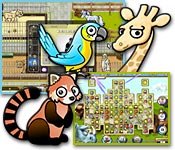 If you're looking for a game that kids will like, this game fits the bill.
If you're looking for a game that kids will like, this game fits the bill.
Highlights
Meaningful and practical match 3: What bothers me about most match 3 games is that all of that work swapping squares, or dragging the mouse across a chain of hexes, serves little purpose. It's just a tedious exercise in finding possible matches. Simplz Zoo gives significance to the match 3 levels. As you make your matches, you have goals in mind. You know that making 3 matches in a row, of the same resource, will offer a beneficial effect on the board. You know that you have powerful board-changing tools charging up to be used at the right time. You have meters at the top of the screen showing you how many more of each resource you need. Sometimes, you need to clear a path for an animal. Sometimes you need to get pieces to the bottom of the match-3 frame. All of this makes the match-3 experience practical. You are maintaining and expanding your zoo by playing the levels in a particular way. As the game progresses, more and more features are added to the match-3 levels. This provides variety and makes the levels more interesting.
Zoo development: I liked that this game had something secondary to work at, and not just an unbroken string of match-3 levels. The developers were clever in giving you goals to work for. The ultimate goal is to become the #1 zoo in the world. The problem is, you start off way at the bottom, working to make it into the top 1000. If you want to become the #1 zoo, you've got your work cut out for you. And if you want to develop your zoo, you need exhibits and other important zoo facilities. To build those, you need to gain resources. To gain resources, you need to play match 3.
So that's how they make the game interesting. The zoo development is the driving force that gives significance to everything you do.
Optional time limit: If you prefer the challenge, you can decide before each level if you'd like to have a time limit. If you don't finish the level's objectives before the timer runs out, you lose and have to try again. If you finish the level with time left, you get bonus points of some sort. I kept the time limit on for a few levels, but then it quickly became too difficult to beat the levels. I preferred taking my time and working to gain lots of resources, rather than racing the clock. So I turned off the time limit for most of the game. I'm so glad they made this optional.

Upgrades and bonuses: Bonuses are to games what sauce is to food. The right sauce can bring any meal to life. Similarly, a game may have swell mechanics, but if you can get helpful boosts in the form of upgrades, it enhances the gaming experience to make it all the sweeter. This game is loaded with such add-ons. As I've explained already, these bonuses exist in both the zoo-building and match-3 portions of the game. They serve as both goals and helpers. They make the game dynamic, and that keeps us playing.
Issues
Production values: This is a game that manages to get away with low-detail graphics and merely adequate music because the gameplay is good. I don't mean the graphics are grainy or poorly crafted. I just don't like the art style. It's too "simplz" for me. The cartoony style lacks depth. It gets the job done in a cute sort of way, but doesn't dazzle on any level. The best graphics in the game are those in the match 3 levels. The pieces look cool, and when you make matches, little purple lights shoot all over the place. The music is just.........mediocre, like most games on the market. The composer obviously understands some things about music, but like the graphics, the soundtrack is too simple. I think this is the first game where I actually turned the music completely off for most of the game. But, hey, it's a matter of taste. You may like it, but don't say I didn't warn you.
That's a musk ox. And he's chewing bubble gum.
Indoor exhibits: Part of the fun, when buying a new animal for your zoo, is seeing the animal walking around. You want to watch the beast you purchased - it seems a fair reward for the work you did to earn it.
But for some reason, the developers didn't want to go the extra mile and actually animate every animal in the game. So they created a huge list of exhibits that house 4 animals each. These exhibits show up in your zoo, but the animals don't. You can see images of the animals on the screen where you buy them, but you don't get to watch them moving around their environment. This was disappointing for me, but even more so for my kids, who wanted to observe each animal in action. They were asking me to "go in" to the Carnivore Cubbyhole exhibit, and I had to inform them that I couldn't.
Was it really that complicated for the developers to make all animals observable?
No ending?: If you've read my reviews before, you know that I like good endings. I feel like developers owe it to the player - a final payoff for completing the game, a 5- to 20-minute closer for the story.
I don't think this game has an ending, but I'm not certain.
I achieved the #1 zoo rank after 85 levels of match 3, and then played a few more for no particular reason. That completed my bulletin board (which serves as a sort of trophy room). I had nothing else to work for, but I could continue playing levels and decorating my zoo with flowers and benches and such, should I care to. So, if I played 100 levels, would I get an ending then? I may never know. If you discover an ending, please comment on this post and let me know.
 You get to see your zoo ranking after each level, as your resources are tallied.
You get to see your zoo ranking after each level, as your resources are tallied.
Suitable for the family?
 If you're looking for a game that kids will like, this game fits the bill.
If you're looking for a game that kids will like, this game fits the bill.
- Animals galore - check!
- Cute - check!
- Educational - check!
The family man's final ruling
I'm not a fan of match 3. And yet I liked this game. I had fun each time I sat down to play, and the kids gladly stood by. They were pleased with each new animal I freed on the match 3 board, and each new animal I added to my zoo. The audio and visuals were nothing special, but the gameplay was clean, and professionally delivered. Multiple goals kept the game interesting. This is probably the most fun I've had with swap-style match 3.You'll like the game if...
You won't like the game if...
|
| My rating: | 
|

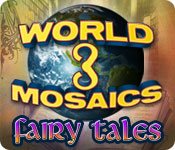
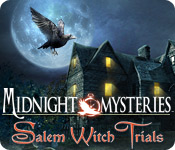

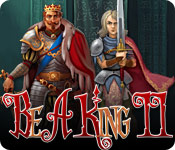








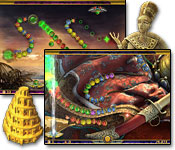 My kids watched me play some of the time. My son especially liked when I made a big deal out of catching good power-up drops. I can't think of anything that would frighten or disturb children. I didn't watch all of the story scenes, admittedly, so I can't comment thoroughly on the content. But I do know that the story involves Egyptian deities and theories of the afterlife, if that bothers you.
My kids watched me play some of the time. My son especially liked when I made a big deal out of catching good power-up drops. I can't think of anything that would frighten or disturb children. I didn't watch all of the story scenes, admittedly, so I can't comment thoroughly on the content. But I do know that the story involves Egyptian deities and theories of the afterlife, if that bothers you.

